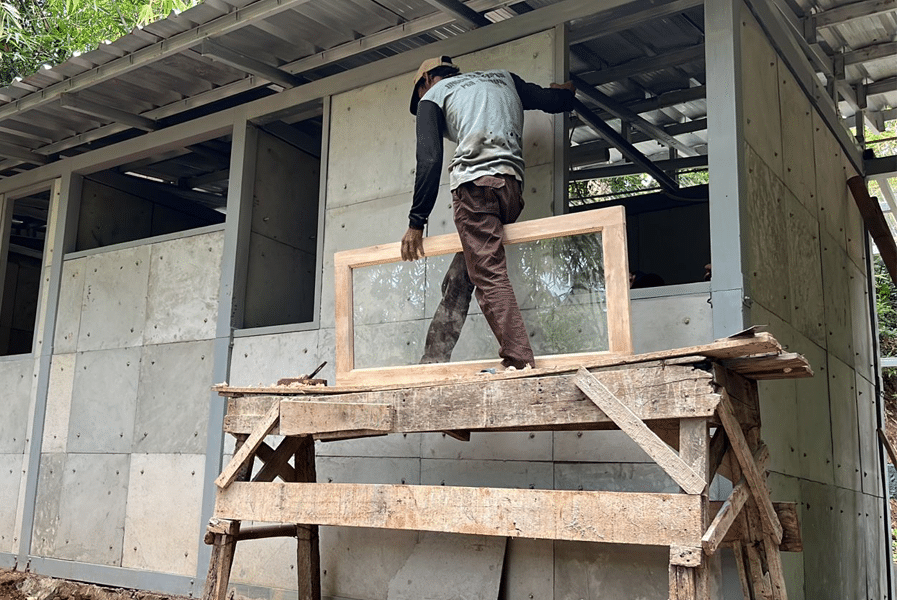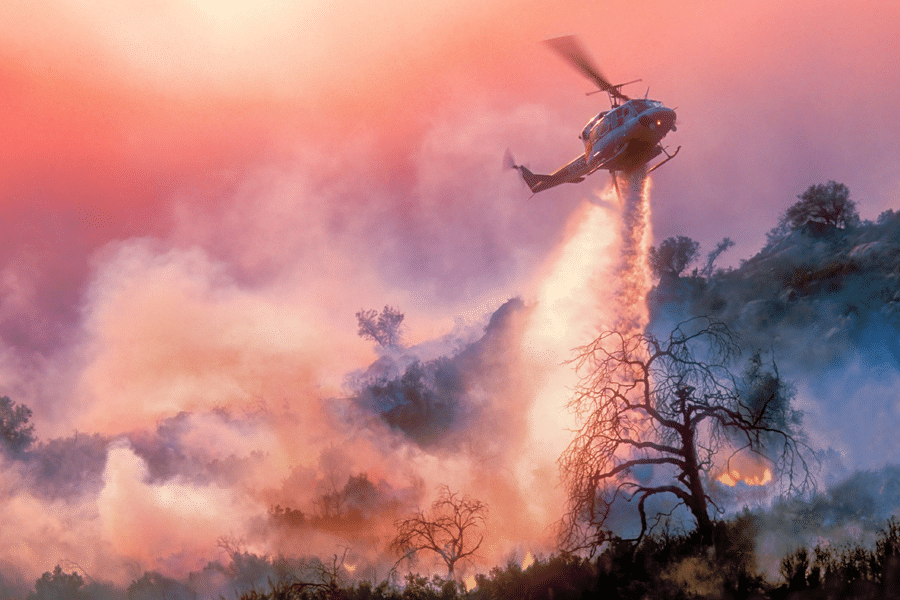97,196.
That’s the number of structures destroyed by the thousands of wildfires that raged across the United States between 2005 and June 2022, according to the nonprofit Headwaters Economics. Although reporting usually emphasizes acres burned, area alone fails to illuminate the human impacts, including homes and businesses destroyed and people evacuated, injured and killed.
The warming climate, population growth, construction in the wildland-urban interface and accidental human ignitions all play a role. And awareness is growing of the need to mitigate risks by rethinking how we build and retrofit structures and make communities more resilient.
The urgency to act is increasing. On May 27, 2023, insurance giant State Farm stopped accepting applications for all personal and business lines of property and casualty insurance in California. The reason? The insurance giant cited “rapidly growing catastrophe exposure” due to soaring wildfire risks and construction costs, according to Business Insider.
Multiple contributors to wldfires
“Wildfires often benefit the ecosystem of an area, but they’ve been excluded from the landscape in places where they’re needed,” said Kimiko Barrett, research and policy analyst at Headwaters Economics. “You’re suppressing the immediate threat but, when fuel builds up, you’re amplifying risk in the long run.”
Wildfire activity is increasing in severity, frequency and duration, partially due to heat- and drought-caused fuel dryness associated with climate change. But that’s only one contributor. Despite the wildfire hazard, more and more homes, commercial structures and outbuildings are being built in flammable areas. Residential and commercial structures are lost in relatively equal numbers—for example, residences accounted for 54% of the 17,904 structures destroyed by wildfire in 2020.
Nearly half of the population in the American West now lives in the wildland-urban interface. This has led to an increase in accidental ignitions from backyard burning and downed or damaged power lines. From 2010-2020, human ignitions started 76% of wildfires that destroyed structures, according to a February 2023 article in the Proceedings of the National Academy of Sciences (PNAS).
On all fronts, the threats are growing.
Destruction on the rise
Throughout the West, structure loss from wildfires between 1999-2009 and 2010-2020 increased 246%, according to the PNAS study. During that period, all the Western states saw a share of fires—but none was as hard-hit as California, which accounted for 77% of structures burned during that period. Countrywide, the acres burned also increased, but even worse, the number of structures lost per 1,000 acres jumped 160% over the past decade. That makes new approaches vital to prevent disasters.
Barrett explained that a key dilemma is the lack of a federal agency that addresses natural hazard resiliency to wildfires. The U.S. Forest Service is charged with suppressing wildfires to protect communities—but “they’re not responsible for parcels and individual homes and structures located in wildfire-prone areas,” she noted.
Zones of hardening
Wildland-urban fires occur when blazes in forests get close enough that flames and/or firebrands—lofted burning embers—ignite fuels in the area. Preventing ignition is the key to structural survival.
A fire more than about 100 feet away from a structure doesn’t directly ignite homes, according to Jack D. Cohen, former research physical scientist with the USDA Forest Service. The issue is firebrands that launch from farther away and either ignite the structure directly or something near the structure that spreads. The National Fire Protection Association delineates several zones of wildfire risk and ways to protect them:
0-5 feet: Harden homes with siding, roofs, decks, attic vents, eaves and windows that resist ignition. Keep combustible materials away from decks, including firewood piles. Create a 5-foot buffer zone by removing vegetation and flammable mulch around homes. Clean gutters and roofs of debris.
5-30 feet: Landscape to break the continuity of fuels and slow fire down. Remove branches that overhang structures. Replace wood fencing attached to the home with metal.
30-100 feet+: Space and prune trees and vegetation to keep flames smaller and lower and interrupt the fire’s path.
The Price of protection
As structures continue to be built—and destroyed—in the wildland-urban interface, more communities are considering building codes and policies to require new home construction that resists wildfires. In areas that are particularly high risk, like California, state law requires residents in high-severity hazard zones to meet exacting standards for construction materials and landscaping around homes.
But California is an exception—the anti-regulatory bent in some states hampers changes to codes and policies. A critical barrier is the perceived price of hardening. To shed light on the real numbers, Headwaters Economics estimated the price to build a wildfire-resistant home vs. a typical home. For the study, “Building a Wildfire-Resistant Home: Codes and Costs,” researchers selected an example structure typical for Montana—a 2,500-square-foot, single-story, single-family home with an asphalt shingle roof, wood siding, dual-pane windows and a wood deck.
The study found the following:
- Constructing a new home to wildfire-resistant codes costs roughly the same as a typical home.
- Retrofitting costs substantially more, especially to replace the roof and walls.
The greatest cost savings in the western Montana study area came from choosing wildfire-resistant fiber cement siding instead of cedar plank on exterior walls. Most costly were changes to the roof, including gutters, vents and soffits.
The Imperative of wildfire hardening
“If you think about products available that could resist ignition from an ember or from radiant heat, then you start to see things differently,” Barrett said. Additional benefits from fire hardening may include longer lifecycles, reduced maintenance, greater energy efficiency and retaining or losing insurance on a structure. The recent State Farm decision shows how precarious the situation has become. “There’s a responsibility for everyone who lives in the West to think about wildfire in untraditional ways,” Barrett said. “We need to start building with wildfire in mind, as we have with all other hazards. There’s also a role for the federal government to provide resources, funding subsidies, technical assistance and support for homeowners to start doing this better and safer.”












